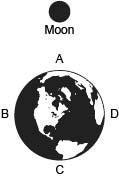
Chemistry, 27.06.2019 03:10 JadedylaneH6980
Given the reactions, x(s)+12o2(g)⟶xo(s) δ=−549.3 kj x(s)+12o2(g)⟶xo(s) δh=−549.3 kj xco3(s)⟶xo(s)+co2(g)δ=+170.9 kj xco3(s)⟶xo(s)+co2(g)δh=+170.9 kj what is δδh for this reaction? x(s)+12o2(g)+co2(g)⟶xco3(s)

Answers: 1


Another question on Chemistry


Chemistry, 23.06.2019 00:00
#7 how does the structure of amino acids allow them to form a polypeptide? each amino acid has an amino group and a carboxyl group. each amino acid has a hydrogen atom and a carboxyl group. each amino acid has a carboxyl group and an r group. each amino acid has an r group and a hydrogen atom.
Answers: 1

Chemistry, 23.06.2019 00:30
Which of the following best describes technology a. something created for only scientists to use b.the method of thinking that scientists use. c.the application of engineering to create useful products. c. a scientific idea
Answers: 1

Chemistry, 23.06.2019 02:00
What is the difference between a substance "getting wet" and "being dissolved" in a liquid at the particulate level?
Answers: 3
You know the right answer?
Given the reactions, x(s)+12o2(g)⟶xo(s) δ=−549.3 kj x(s)+12o2(g)⟶xo(s) δh=−549.3 kj xco3(s)⟶xo(s)+co...
Questions






Mathematics, 10.10.2019 08:50







English, 10.10.2019 08:50


Mathematics, 10.10.2019 08:50



Mathematics, 10.10.2019 08:50






